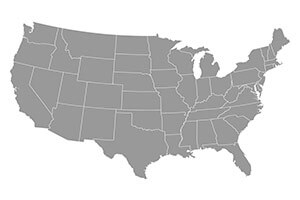
The USDA National Agricultural Statistics Service published their U.S. and state honey crop production estimates for 2015 in late March. They estimated that U.S. honey production fell 12 percent in 2015. It is notable that honey production fell in almost every large honey production state which includes North Dakota, South Dakota, California, Florida, Montana and Texas. Minnesota was the only major honey-producing state registering an increase in honey production. In addition, the USDA report said that honey prices fell 4 percent, which is the first decline noted in recent years when both wholesale and retail prices were generally on the upswing. Beekeepers blame part of the decrease in wholesale prices on the availability of cheaply priced foreign honey now coming into the country in larger amounts. On the bright side, sales of local honey in smaller lots has continued to be reported as mostly strong by our reporters.
In the southern U.S. and California major honey flows were getting underway and beekeepers were hoping for better yields this season. Meanwhile, beekeepers in the northern half of the country were still replacing deadouts or making divides as the spring buildup flows began. Colonies overwintered quite well due to the mild winter in many locations. Notable exceptions were reported by some beekeepers who said their worst losses came in late fall rather than late winter. Losses described sounded more like they were varroa and viral related rather than being caused by starvation.
NORTHEAST
Beekeepers were busy feeding colonies and preparing hives for installation of packages, nucs or divides. Bees overwintered in fair to good condition. Demand for bees and queens has been strong again this year. Overall losses in this area were estimated to be around 30%. However, some beekeepers are still reporting devastating bee losses, while others claim that their bees are wintering better. Some beekeepers who had heavy losses in the fall believe that deformed wing virus was the main culprit. The winter did allow for more frequent cleansing flights, so bees were able to break cluster and reform on new stores. Meanwhile, warmer spring weather continued to bring more wildflowers, dandelions and fruit bloom providing good bee pasturage on good flight days. The first main flows will come from assorted wildflowers, black locust and clover. Local beekeepers are mostly sold out of their 2015 honey. They expect demand will continue to be strong for locally produced honey in 2016.
MIDEAST
Despite a few cold, rainy periods, colonies have been building up well this spring on maple, willow, elm, henbit and assorted wildflowers. The winter was generally mild, which allowed a higher percentage of colonies to come into spring with larger clusters. Winter losses were estimated to be 30 percent or below with some beekeepers indicating that the warmer December had allowed bees to consume too much of their stores before the main part of winter began forcing earlier feeding to prevent starvation. Colonies continued to work varied sources of wildflowers and beekeepers were hoping for better black locust, sumac, berries, persimmon, tulip-poplar and clover honey flows this year if the weather cooperated. Beekeeping continues to be a very popular hobby with bee associations reporting excellent attendance at short courses offered to the public. Demand for packages, nucs and queens also remains strong. Demand for locally produced honey is expected to remain excellent. Most beekeepers were completely sold out of their 2015 honey crop.
SOUTHEAST
As this report was prepared, Florida beekeepers were still in the midst of orange, ti ti, wildflower and tupelo flows. The orange flow yielded much better than expected despite continued concerns with citrus greening and spraying, which is keeping many beekeepers out of the groves. Reporters said they had plenty of rain this winter, and were hoping for better gallberry and palmetto flows. An estimated 200,000 colonies that were being overwintered in Florida were trucked to California for almond pollination this year, according to USDA reports. While the majority of these bees were returned to the state for orange and gallberry flows, many were transported from California to other western states for more pollination work in apples, cherries, pear and other fruit orchards.
In Georgia, Alabama, Mississippi and South Carolina colonies continued to build up on assorted wildflowers, bushes and clover. Ground moisture is adequate for continued good growth of


